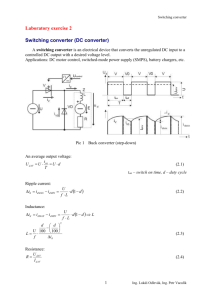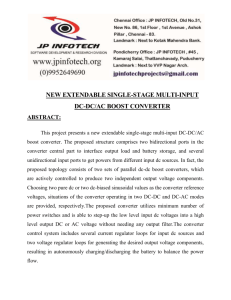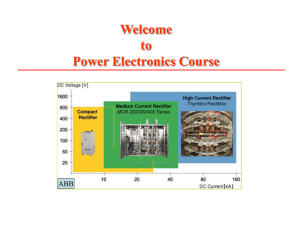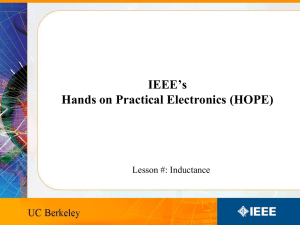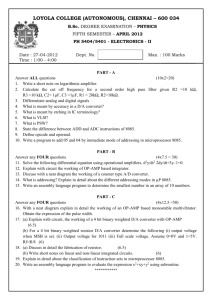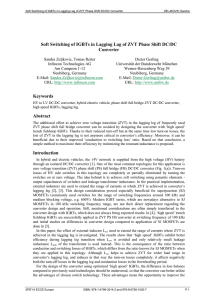14PE11 A Novel ZVT-ZCT-PWM Boost Converter Altintas, N. Bakan
advertisement
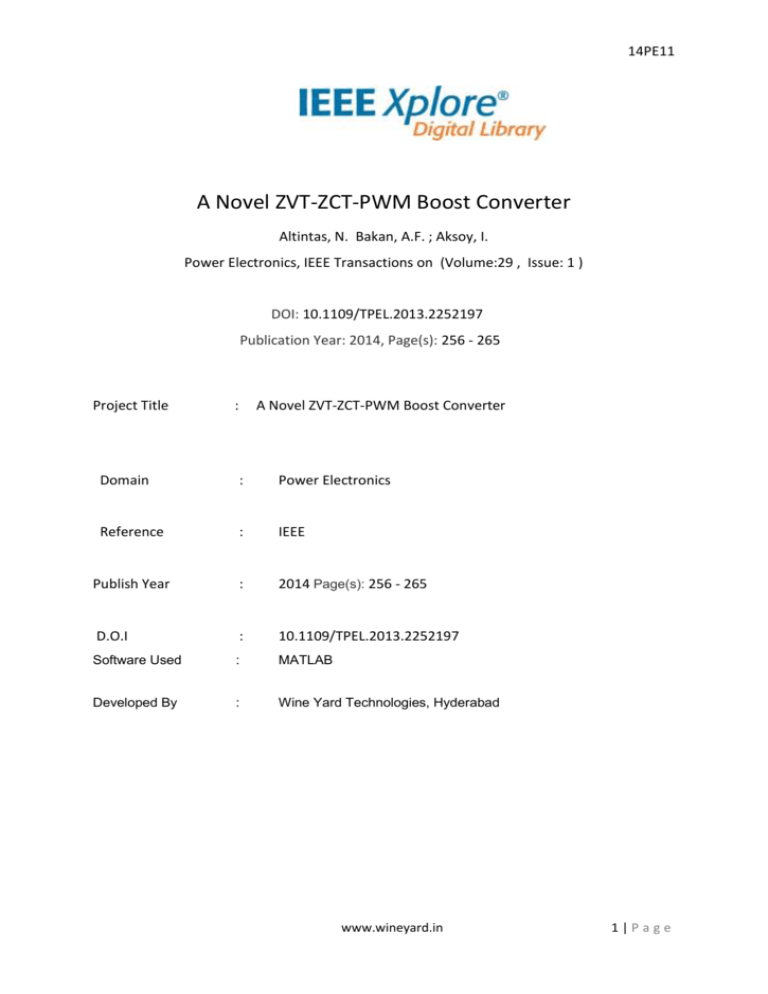
14PE11 A Novel ZVT-ZCT-PWM Boost Converter Altintas, N. Bakan, A.F. ; Aksoy, I. Power Electronics, IEEE Transactions on (Volume:29 , Issue: 1 ) DOI: 10.1109/TPEL.2013.2252197 Publication Year: 2014, Page(s): 256 - 265 Project Title : A Novel ZVT-ZCT-PWM Boost Converter Domain : Power Electronics Reference : IEEE Publish Year : 2014 Page(s): 256 - 265 D.O.I : 10.1109/TPEL.2013.2252197 Software Used : MATLAB Developed By : Wine Yard Technologies, Hyderabad www.wineyard.in 1|Page 14PE11 A Novel ZVT-ZCT-PWM Boost Converter In this application, a new boost converter with an active snubber cell is proposed. The active snubber cell provides main switch to turn ON with zero-voltage transition (ZVT) and to turn OFF with zero-current transition (ZCT). The proposed converter incorporating this snubber cell can operate with soft switching at high frequencies. Also, in this converter all semiconductor devices operate with soft switching. There is no additional voltage stress across the main and auxiliary components. The converter has a simple structure, minimum number of components, and ease of control as well. The operation principle and detailed steady-state analysis of the novel ZVT-ZCT-PWM boost converter are given. The presented theoretical analysis is verified exactly by a prototype of 100 kHz and 1 kW converter. Also, the overall efficiency of the new converter has reached a value of 97.8% at nominal output power. High-frequency PWM dc–dc converters have been widely used in power factor correction, battery charging, and renewable energy applications due to their high power density, Fast response, and control simplicity. To achieve high-power density and smaller converter size, it is required to operate converters at high switching frequencies. However, high-frequency operation results in increased switching losses, higher electromagnetic interference (EMI), and lower converter efficiency. Especially, at high frequencies and high power levels, it is necessary to use soft-switching techniques to reduce switching losses . In the conventional zero-voltage transition (ZVT)-PWM converter , the main switch turns ON with ZVT perfectly with by means of a snubber cell. On the other hand the main switch turns OFF under near zero voltage switching (ZVS). The main diode turns ON and OFF with ZVS. The auxiliary switch turns ON with near zero-current switching (ZCS) and turns OFF with hard switching. The operating of the circuit is dependent on line and load conditions. www.wineyard.in 2|Page 14PE11 To solve the problems in the conventional ZVT converter, many ZVT converters are suggested the main switch turns ON with ZVT and the auxiliary switch operates by soft switching. The main switch turns OFF with near ZVS and soft switching depends on load current. Active clamp ZVT is realized. It is required to use two main switches. Zero-current transition (ZCT) is not implemented. To obtain active clamp two auxiliary switches Are used. Additionally, the converter requires a special design transformer and two rectifier diodes. In the conventional ZCT-PWM converter, the main switch turns OFF under ZCS and ZVS. The auxiliary switch turns ON with approximate ZCS. The operation of the circuit depends on circuit and load conditions. When the main switch turns ON reverse recovery current flows through the main diode and a short circuit occurs between the main switch and the diode. The auxiliary switch turns OFF by hard switching and the parasitic capacitors of the switches discharge through the switches . Conclusion: In the proposed converter, all semiconductor devices are switched under soft switching. In the ZVT and ZCT processes, the auxiliary switch is turned ON under ZCS and is turned OFF With ZCT and near ZCS, respectively. There is no additional voltage stress across the main and auxiliary switches. The main diode is not subjected to any additional voltage and current Stresses. The operation principles and steady-state analysis of the proposed converter are presented. In order to verify the theoretical analysis, a prototype of the proposed circuit is realized in the laboratory. The novel ZVT-ZCT-PWM boost converter using the proposed snubber cell has desired features of the ZVT and ZCT converters. It is observed that the operation principles and the theoretical analysis of the novel converter are exactly verified by experimental results taken from the converter operating at 1 kW and 100 kHz. Additionally, at nominal output power, the converter efficiency reaches approximately to 97.8%. www.wineyard.in 3|Page 14PE11 In both ZVT and ZCT processes of the main switch so it is switched twice in a switching period. In the both operations, the conduction time of the auxiliary transistor is nearly 600 ns. In the ZVT and ZCT processes of the main switch, the auxiliary switch is turned ON under near ZCS and is turned OFF with ZCT and near ZCS, respectively. Because of the resonance circuit loss, the peak current through the auxiliary switch in the ZCT interval is lower than the ZVT interval. As seen from the waveforms, there is no additional voltage stress across the auxiliary switch and it operates under soft switching. www.wineyard.in 4|Page

